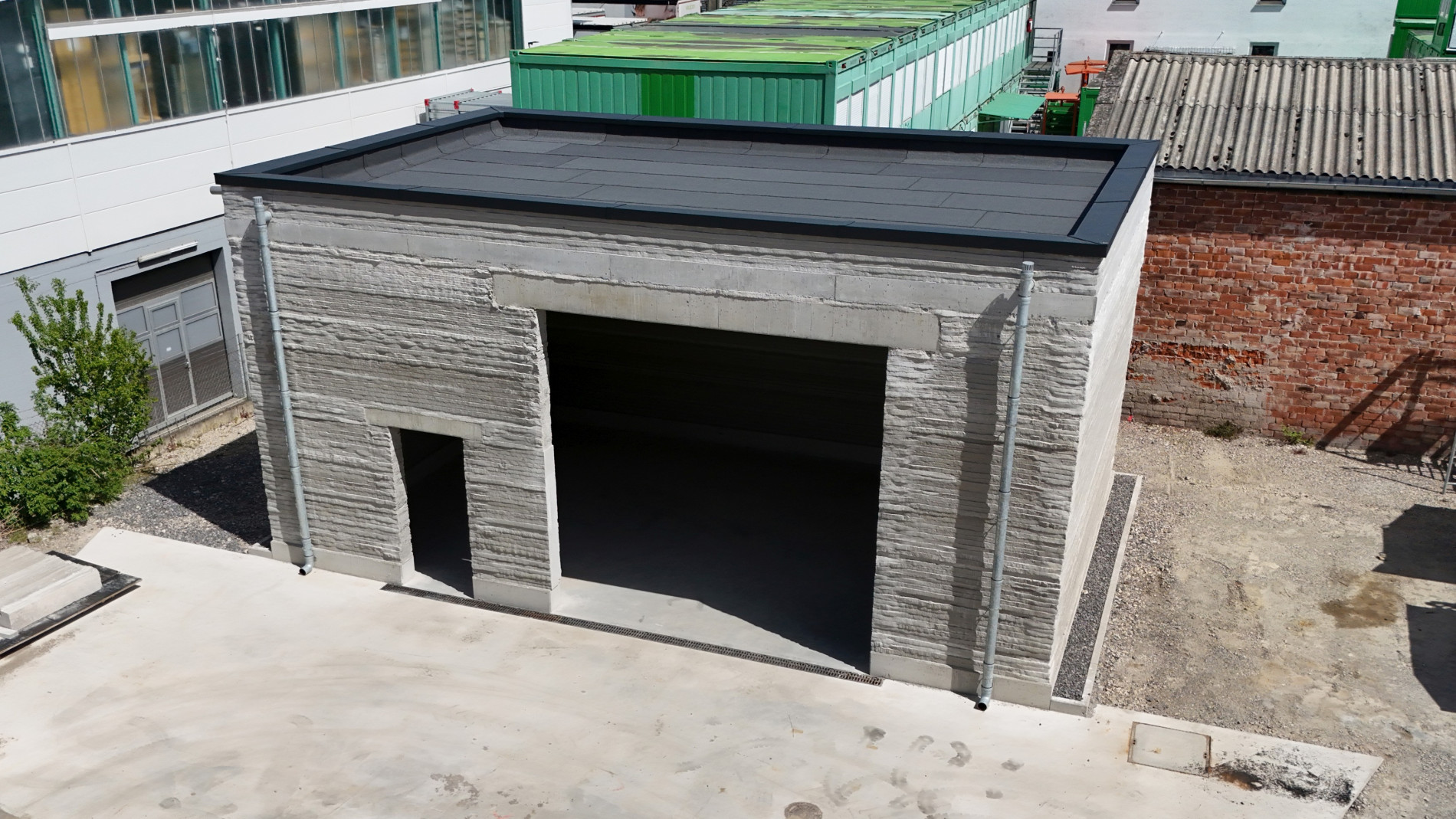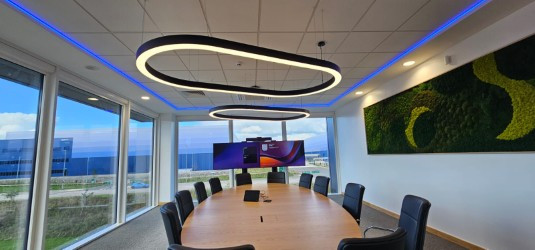A major first step for 3D printed load bearing walls
Stuttgart, Germany, is witnessing a construction revolution – the rise of a building formed entirely through 3D printing technology. This pioneering project, undertaken by Züblin, a German construction engineering company, marks a significant leap forward in the field, raising hopes for a future where buildings are not just assembled but literally printed into existence, writes John Ridgeway.
Züblin claims this is a "world first" – the creation of a single-story building with load-bearing concrete walls constructed entirely through 3D printing. This is a significant distinction from previous attempts, which often focused on smaller structures or non-load-bearing components. It now provides a test bed for Züblin to refine their 3D printing capabilities and processes. (See link at the bottom of this article to watch video)
The rise of the mobile printer
One of the major challenges hindering the widespread adoption of 3D printing in construction has been scalability. Traditional methods often relied on portal printers, with a limited reach that restricted them to smaller projects. However, Züblin's project was different with the introduction of the the Putzmeister's KARLOS mobile concrete printer, a machine which is proving to be a game-changer.
The KARLOS features a 26-metre reach mast boom, overcoming the limitations of its portal counterparts. This extended reach allows for the "precise application of concrete in several layers" based on a pre-defined digital blueprint. This increased range and flexibility paves the way for the potential application of 3D printing technology to larger-scale construction projects in the future.
Unlike conventional 3D concrete printers that use a rounded-edge extrusion method, the KARLOS printer employs a unique approach. It delivers cementitious paste in a rectangular form, akin to building blocks. These "squared walls" offer a crucial advantage – the structural integrity to support the weight of the building itself. This innovation demonstrates the ongoing advancements in 3D printing technology specifically tailored for construction applications.
A vision for the future
While the efficiency and speed gains offered by 3D printing are significant, Züblin emphasises the project's potential contribution to a more sustainable construction industry. Several key factors support this vision such as the elimination of formwork. Traditional construction methods rely heavily on formwork – temporary structures used to shape and support concrete as it sets. 3D printing eliminates the need for this resource-intensive step, reducing overall project waste.

The ability to print walls in a single operation also offers a significant advantage over traditional brick-by-brick construction. This reduces construction time and potentially minimises material waste associated with cutting and fitting conventional building materials.
There is an additional bonus. Züblin used a CO2-reduced concrete, a more environmentally friendly alternative to traditional concrete mixes, for the project. Additionally, the KARLOS printer used green electricity, further reducing the project's carbon footprint.
A blueprint for change
The Stuttgart project goes far beyond innovative printing technology. Züblin incorporated the integration of 3D printing with Building Information Modelling (BIM) and electrification as a cornerstone of their vision for the future. BIM allows for the creation of a digital model of the entire building, facilitating precise planning and data-driven construction. The project also used electric-powered machinery, further contributing to a more sustainable construction process.
By combining these elements, Züblin has shown that 3D printing has the potential to revolutionise construction workflows. Automation can further streamline processes, potentially reducing labour costs and project timelines. Additionally, the integration of BIM and 3D printing allows for a more precise and potentially less error-prone construction process.
Challenges remain
Despite the promise of 3D-printed buildings, challenges remain. The current cost of 3D printing construction can be higher compared to traditional methods. Additionally, regulations and building codes may need to adapt to accommodate this novel technology in the future. Furthermore, the role of human labour in construction will likely evolve as 3D printing becomes more prevalent. Upskilling and retraining construction workers will be crucial to ensure a smooth transition and continued employment opportunities.
That said, the 3D-printed building in Stuttgart is a significant milestone, but it's just the beginning. The successful completion of the Stuttgart project opens doors to a future brimming with possibilities such as affordable housing. 3D printing has the potential to revolutionise housing construction, particularly in regions facing a shortage of affordable options. The potential for faster construction times and reduced material waste could also lead to more efficient and cost-effective housing solutions.
The rapid deployment capabilities of 3D printing could also be invaluable in disaster relief situations. Pre-designed and easily printable structures could provide temporary housing or emergency shelters in areas hit by natural disasters.
As 3D printing technology continues to evolve, the use of recycled materials and sustainable construction practices could become more widespread. This could lead to the development of eco-friendly and energy-efficient buildings with a lower environmental impact.
A new chapter in construction
The 3D-printed building in Stuttgart represents a pivotal moment in the history of construction. It signifies a future where tradition and technology converge, where buildings are not just assembled but meticulously crafted layer by layer. While challenges remain, the potential benefits of 3D printing in construction are undeniable – from increased efficiency and sustainability to the potential to address global housing shortages and revolutionise disaster relief efforts. As this technology continues to evolve and gain wider adoption, we can expect to see a paradigm shift in the way we design, build, and interact with the structures that shape our world.
Sources
· Check out the video to see the Stuttgart project in action (https://www.youtube.com/watch?v=YniNA0KYfjY)
· 3D Printing Industry Website: This website offers news and resources related to 3D printing technologies across various industries, including construction. (https://3dprintingindustry.com/)
· American Society of Civil Engineers (ASCE): (https://www.asce.org/
Additional Blogs

The changing face of workplace AV and what FM managers need to know
In today’s hybrid workplaces, facilities managers can no longer treat audio-visual systems as background infrastructure - they are now mission-critical assets that directly influence productivity,...
Read moreConstruction’s obsession with blame instead of learning
Construction is one of the most technically advanced industries in the built environment, yet culturally it often behaves like one of the least reflective. When things go wrong and they frequently...
Read more

How risk Is routinely pushed down the supply chain
Risk is an unavoidable part of construction. Every project involves uncertainty around ground conditions, weather, design coordination, procurement, labour and programme. Yet while risk is inherent,...
Read more